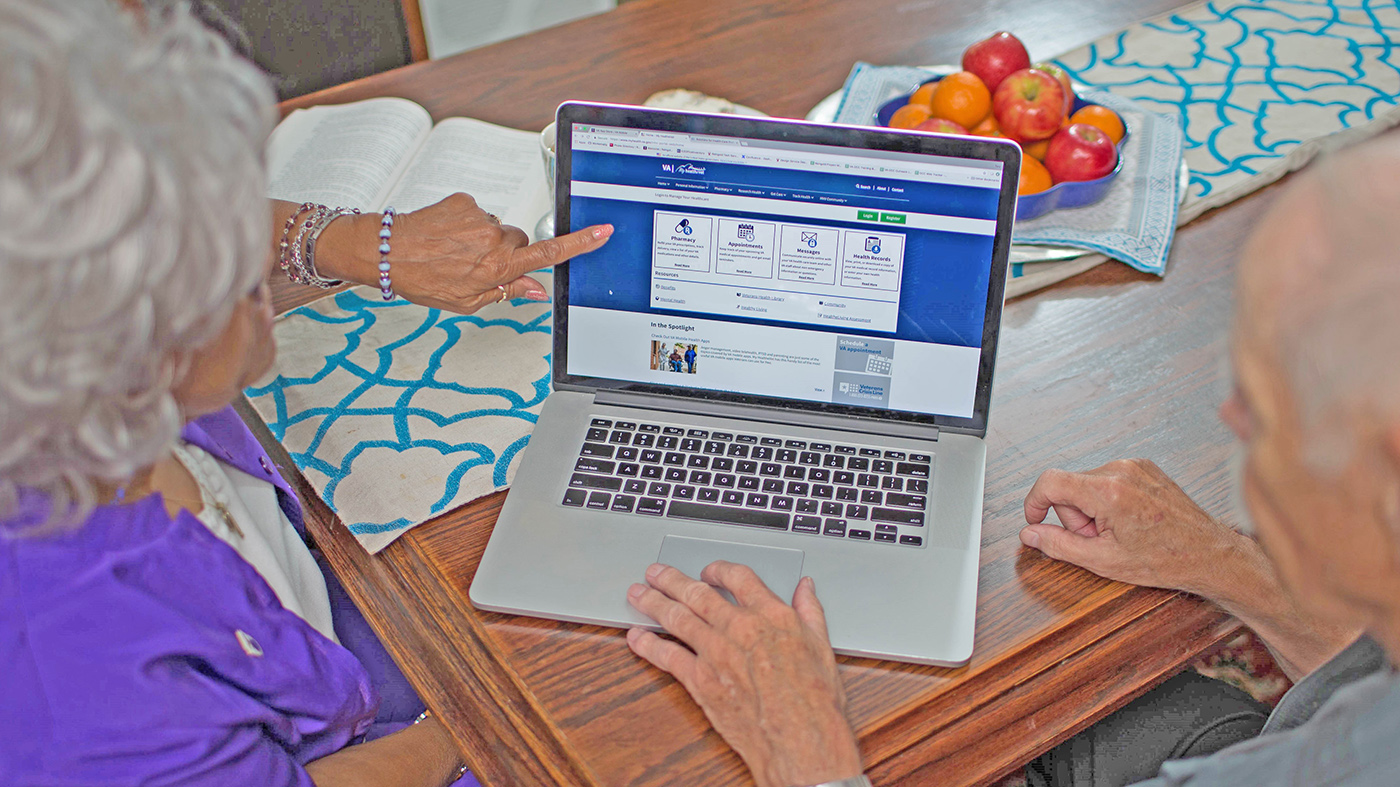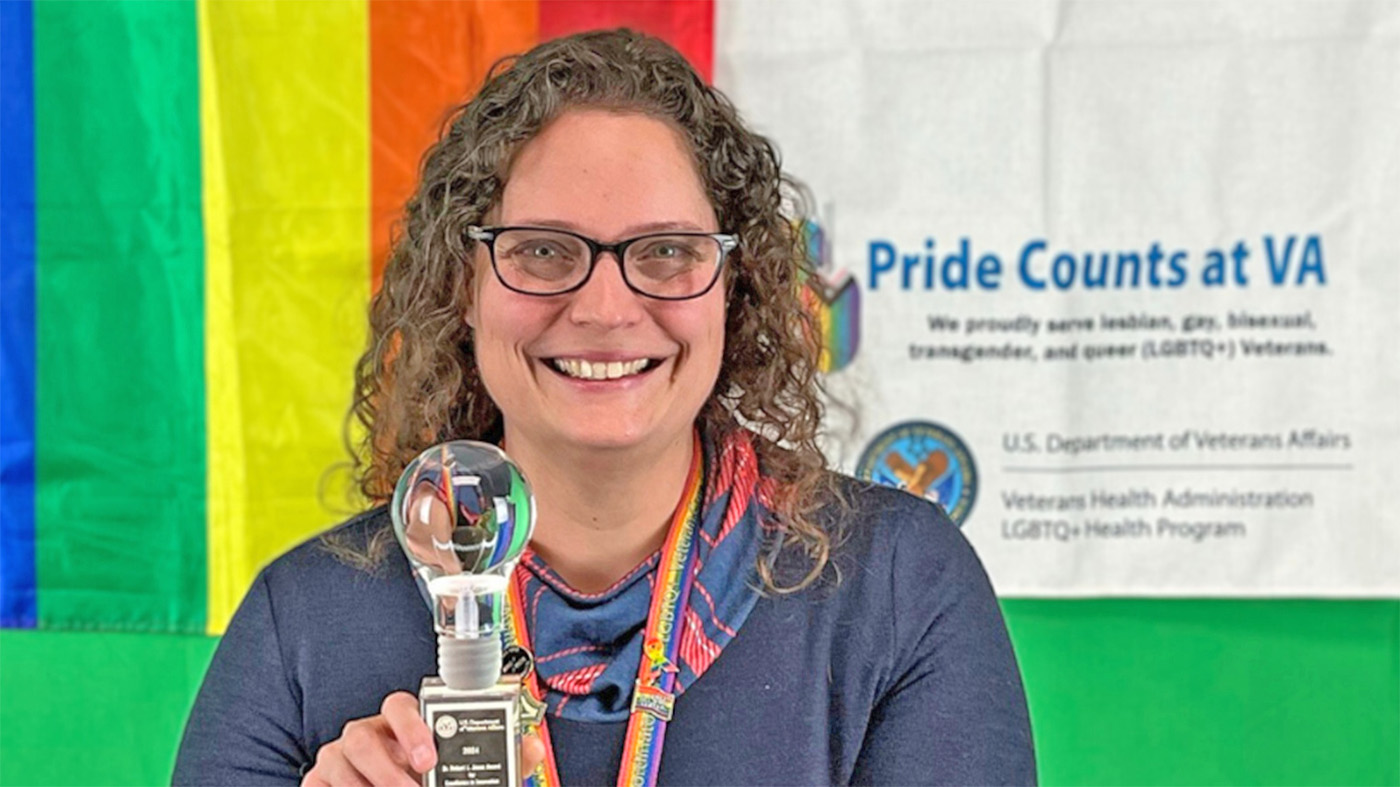This Veterans Day will mark the 20th anniversary of My HealtheVet, VA’s online patient portal.
Over the past two decades, My HealtheVet has become a crucial part of VA care. Just ask Maple Davis, an Army and Army Reserve Veteran who has used the platform since it launched in 2003.
“I tell every Veteran I talk to that if you’re not on My HealtheVet, you need to sign up because it is the absolute best way to communicate with your providers, to get things done and to learn information,” Davis said.
Over 20 years, My HealtheVet has connected more than 7 million Veterans like Davis to VA care.
History of My HealtheVet
My HealtheVet started as a pilot program in 1999 at nine VA medical centers. It launched nationally on Veterans Day, Nov. 11, 2003.
Over the years, My HealtheVet added the features that millions of Veterans rely on today:
- 2005: Online prescription refill requests
- 2008: Secure Messaging
- 2010: VA Blue Button
- 2017: Online appointment scheduling
- 2018: VA Medical Images and Reports
- 2023: My HealtheVet begins transition to VA.gov
Davis was thrilled to see the platform grow over the years. “When VA added more features, I thought, ‘Yes, this is the best thing since cheese was invented.’”
Since it began, Veterans have used My HealtheVet to send over 255 million VA prescription refill requests, initiate over 204 million secure messages with their VA care teams and download over 59 million health record files through VA Blue Button. And features pioneered by My HealtheVet—like VA Blue Button—have become standard in public and private patient portals around the world.
“It empowered the Veterans.”
My HealtheVet’s success has been thanks to dedicated VA staff members like Susan Haidary, who has worked at VA for 30 years and who, in 2003, started there to support the brand-new platform. At the time, many people thought My HealtheVet was a “fly-by-night software program that will fizzle out within a year.” Instead, it quickly became a popular tool for Veterans.
“My HealtheVet ended up being the most fun part of my job. I really felt like it empowered Veterans. They felt like they had some control over their VA health care,” Haidary said.
Haidary recounted a decade-old story of a Veteran who got into a bad car accident and was rushed to a non-VA hospital. In the emergency room, he accessed My HealtheVet on his phone to show the doctors what medications he was on.
“It essentially helped save his life. The ER doctor called us to say, ‘It was seeing his VA medical record that really made a difference in his treatment.’”
Coordinators are the heartbeat of the program
My HealtheVet coordinators at VA facilities across the country help Veterans and staff members use the platform. “They are truly the heartbeat of the program,” said Haidary. “We would not be where we are without their commitment, dedication and passion.”
Sonya Wilson is a dedicated coordinator at Central Alabama VA in Montgomery. After 26 years in the Air Force, she wanted a career where she could support her fellow Veterans. “I really feel like I make a difference as a My HealtheVet coordinator. I absolutely love what I do. I feel fulfilled when I go home every day,” she said.
Theresa Gardner has spent over a decade as a coordinator at North Las Vegas VA. “I love the job I do, and I love working with Veterans. Almost everyone I talk to is so grateful they have My HealtheVet right at their fingertips.”
What’s next for My HealtheVet?
After 20 years, My HealtheVet supports more Veterans than ever with hundreds of thousands accessing the platform each month, and it’s still evolving to meet Veterans’ needs. Soon, My HealtheVet will move from its current website to VA.gov. This will enable Veterans to manage their VA health care on the same website where they already access benefits and services.
Theresa Hancock, director of My HealtheVet since 2005, said, “At VA, we want to empower Veterans to be active participants in their care. My HealtheVet has partnered with Veterans for two decades and will continue to improve and revolutionize our capabilities by putting VA care at Veterans’ fingertips.”
Topics in this story
More Stories
Bob Jesse Award celebrates the achievements of a VA employee and a team or department that exemplifies innovative practices within VA.
The Medical Foster Home program offers Veterans an alternative to nursing homes.
Watch the Under Secretary for Health and a panel of experts discuss VA Health Connect tele-emergency care.







I have used My Chart for several years for my Mother who lives in Maine and I live in California. have learned to navigate it but find it much harder to use than MHV. Yes the sign in process in more complicated, but of course that is for our security and harder to learn for the older generation. I work with it everry day as my job and is compfortable with it’s changes. Like everything else there are learning curves and we don’t want them to all happen at once for it will discourage the use of it.
The nursing staff play an important part in being the filter for the Dr.. With this process, they can take care of a lot of things so the Dr. can focus on patient Care. As for attachments, being a past healthcare worker, I know there are several places I can go to see Medical attachments and I would have a tendancy to quickly look at it and toss. It is just human tendancy especially if your busy and have a heavy load.
As a Veteran and a VHA employee, I am very happy with the way MHV id progressing
Regarding this messaging system, the VA should switch to the “My Chart” system that many hospitals use. My Chart enables patients to communicate directly with their doctors.
The problem with MHV, is that the reply will generally come from a nurse who will write that she/he will pass the message to the doctor. (If the doctor is out on vacation or some special assignment, he may not get the message for several weeks.) That means printing the message, not forwarding it. If my message included a link, the doctor would have to type that link into another computer in order to see the article; not the same as clicking on a link. The same goes for attachments, but if the nurse is sharp, she will print it for the doctor, although the attachment can have a very large number of pages, while I may want to have the doctor see only a few pages.
I think there should be a class for none technical civilians.
Many other hospitals have “My Chart,” which has the means for patients communicating directly with their doctors, unlike MHV. With MHV, when I send a message for one of my doctors, I get a reply from a nurse, saying that she/he will give the message to the doctor. This means that my message will be printed and given to the doctor, whenever that doctor may be in the clinic. The message will not be forwarded like one forwards an email.
If I have a link to an article that I want the doctor to see, only the link will be printed, and not the article the doctor would see if the nurse could have forwarded the entire message to the doctor. As for the attachments, it’s possible that the nurse will print it for the doctor, but there are times when the attachment will be many pages long, but I only want the doctor to see a certain part.
Most of my doctors are from Northwestern Medicine, a top notch nearby hospital, so they will only be at my VA hospital for a half day per week. It that doctor is on some special project, he may not get the message for several weeks. If that doctor is only scheduled to be at the VA hospital on Mondays, there will be the additional delay if Monday is a holiday.
MHV is only a step in the right direction, but it’s not the same as My Chart